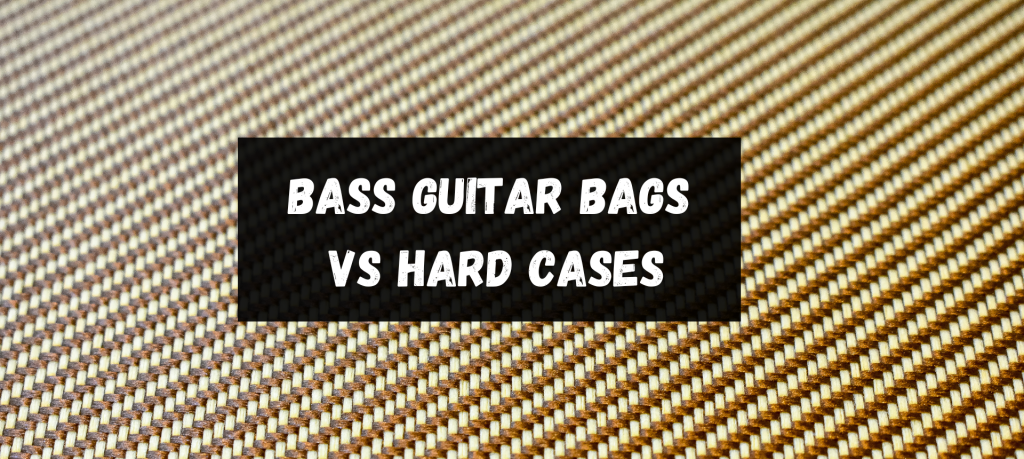August 9, 2023
Howard
Oi, fellow bass enthusiasts! Wan to know about bass guitar picks? There’s a cheeky little secret in the world of bass that not everyone talks about: the pick you choose can massively impact your sound. Whether you’re just strumming away in your bedroom or hitting the local scene, the humble plectrum plays a bigger role than you might think. This guide is all about getting you acquainted with the ins and outs of bass guitar plectrums. So, pop the kettle on, put your feet up, and let’s get into the nitty-gritty of it all. Cheers!
Choosing a Bass Guitar Pick: Thickness
Alright, let’s kick things off with one of the most crucial aspects of your plectrum choice: the thickness.
1. Thin Picks (0.50mm to 0.70mm):
These flexy little numbers are quite rare in the bass world. They produce a lighter tone and are perfect for those who want to blend seamlessly into the background or are just looking for a softer touch. Think smooth jazz or acoustic sessions in a cosy pub.
2. Medium Picks (0.70mm to 0.90mm):
The ‘middle of the road’ pick. It’s versatile and gives you a balanced tone – not too hard, not too soft. Perfect for those pop numbers or if you’re just starting out and finding your groove.
3. Thick Picks (1.00mm and above):
Now, these are the real bruisers. Thick picks produce a solid and punchy tone, perfect for those who like to make their presence felt. If you’re into rock, punk, or any genre where the bass is the backbone, then this is the pick for you.
Remember, there’s no ‘one-size-fits-all’. It’s all about what feels right in your hand and what sounds right to your ears. Experiment with a range of thicknesses to find your perfect match. But always bear in mind, in the world of bass, thickness truly does matter!
What Material Should I Choose For My Bass Guitar Pick?
Right, so we’ve chatted about the thickness, but what about the stuff your plectrum’s made of? Much like a proper British brew, everyone’s got their preference, and the material of your pick can massively influence the tone and feel of your playing.
1. Nylon:
Soft, flexible, and with a smooth attack, nylon picks have been the choice of many for their durability and grip. They tend to produce a warmer, mellower sound. If you’re prone to dropping picks during passionate solos, many nylon picks come with a raised grip which might just be your saving grace.
2. Celluloid:
Ah, the classic. These picks have a vintage feel and can mimic the sound qualities of natural tortoiseshell. They offer a bright and crisp tone, which can be perfect for those lively tracks. Just a little note: they can wear out quicker than some other materials.
3. Tortex (Delrex):
Introduced as an alternative to tortoiseshell, Tortex picks provide a good grip and a balanced tone between bright and warm. They’re durable and come in a wide range of thicknesses, making them quite popular among bassists.
4. Metal:
For those looking for a sharper tone and impeccable durability. Metal picks have a unique feel and can bring out a bright, cutting sound from your bass. They’re not everyone’s cup of tea, but if you want to make a statement, this might be your go-to.
5. Wood:
Not as common, but wood picks produce a warm and organic tone. They can vary in hardness based on the type of wood, but they tend to offer a completely different playing experience.
6. Felt:
Mainly used for ukuleles, but some bass players swear by them for a super mellow and soft tone. If subtlety is your game, give felt a whirl.
In the end, the material you choose is much like picking out your favourite album – it’s deeply personal. So, don’t be shy to try out a few different ones. After all, variety is the spice of life… or in this case, the spice of your bass playing!
Bass Guitar Picks: Shapes & Sizes
Alright, on to another essential bit: the shape and size of your plectrum. Just like how every bassist has their own unique swagger, picks come in a plethora of shapes and sizes, each bringing its own feel and flair to the party.
1. Standard Shape:
Probably the first image that pops into your head when someone mentions a pick. The standard shape is a bit like the Swiss Army knife of the plectrum world – versatile, reliable, and familiar. Great for almost any style.
2. Teardrop:
A bit smaller and, as the name suggests, shaped like a teardrop. This pick gives you a bit more precision, which might be perfect if you’re into those intricate bass lines that require a touch more finesse.
3. Triangle:
Three edges for the price of one! Triangular picks offer a lot of real estate to grip, making them a fave for those with bigger hands or for players who switch between picking styles within songs.
4. Sharkfin:
Unique in design, the sharkfin offers multiple playing surfaces. The pointed end can be used for precise picking, while the wider section offers a more rounded sound. Plus, let’s be honest, it’s got a cool name.
5. Jazz Picks:
Small and sharp, these picks are often preferred by jazz bassists (shocker, I know) due to their precision. They might be tiny, but they sure pack a punch when it comes to control.
6. Large Rounded Bass Guitar Picks:
Think of these as the gentle giants of the pick world. They’re perfect for players looking for a softer attack, and they give off a mellow and smooth sound.
It’s crucial to remember that while shape and size play a pivotal role, it’s all about how the pick feels in your hand and how it complements your playing style. A bit like finding the right pair of boots – once you’ve found the right fit, you’ll be strutting your stuff with confidence. So, go on and explore different shapes and sizes, and find that perfect partner for your bass-playing adventures.
Frequently asked questions
Bass picks are generally thicker and sometimes larger to handle the robustness of bass strings.
It depends on personal preference and playing style, but many bassists lean towards thicker picks (1.00mm and above).
Not more difficult, just different. Some might need an adjustment period if transitioning from fingerstyle.
Both methods have their merits. It boils down to personal taste and the tone you’re aiming for.
Yes, Sir Paul McCartney predominantly uses a pick when playing bass, contributing to his distinctive style.
Conclusion
Navigating the realm of bass guitar picks is a personal journey, influenced by style, comfort, and desired tone. Whether you’re a pick aficionado or a fingerstyle devotee, the key is to find what resonates with you. So, experiment a tad, trust your ears, and most importantly, enjoy every thumping moment on your bass journey. Rock on, and keep the groove alive! 🤘🏻
Want to know how to learn bass guitar?

Howard Head
I turn confused bass enthusiasts into bass gods through a simple and logical process.

















